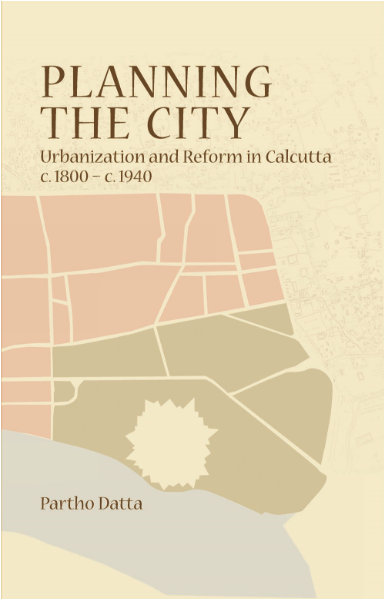Planning the City
In 1820, an unusual letter was published in the Bengali newspaper Samachar Darpan. It was a plaintive appeal from the rats of the city of Calcutta saying they were being unfairly displaced from their ancient dwellings. Calcutta was indeed going through momentous changes – new roads and neighbourhoods were being planned, channels for draining were being dug, new structures were coming up and existing buildings refurbished. These changes were not random. A new spatial order was coming into its own backed by the powerful ideology of town planning. Planning encompassed not only the regulation of physical spaces but also the multiple concerns of health, policing and commerce.
Planning happened largely in the guise of ‘improvement’ and the intervention of the colonial government was important. Despite resistance and scepticism, and some reversals, the task of imposing a rational urban order on the city continued. The history of this colonial initiative can be traced through three sets of archival documents which have so far been sparingly used by historians of Calcutta.
Lord Wellesley began the process with his prescriptive Minute on Calcutta in 1803, which led to the setting up of the Lottery Committee in 1817 – so-called because funds for the city were raised through public lotteries. The investigation of the Fever Hospital Commission followed in the 1830s and, as the name suggests, the locations of epidemic fevers determined areas for urban restructuring. The Municipality, throughout the second half of the nineteenth century, had to reckon with bustis which housed the labouring poor. But it was only after the plague epidemic in 1897 that an autonomous organization to plan the city came into being: the Calcutta Improvement Trust was set up in 1911.
This book examines and assesses the continuity of colonial urban policy and its impact, particularly in terms of the social costs to the displaced population and its implications for understanding planning history generally.

“Partho Datta’s book turns out to be a particularly instructive read in a city struck by an epidemic of dengue and viral fevers…. The book comes as an unsettling reminder that Calcutta’s proverbial equation with filth and insanitation, disease and death, has proven impossible to undo, from colonial times into the present… there is no denying that there is a lot to learn from this book, a lot to look back upon. Firstly, compressed into this one volume is an extraordinary range of maps, reports and surveys, that strung together, comprise a powerful configuration of modern town planning visions that shaped and were shaped in turn by Calcutta’s specific topography and social history.”
Tapati Guha-Thakurta, The Book Review
“The book may be read on two levels: as a deeply researched history of Calcutta, and as a more general, thesis on planning under colonial conditions…. The book is well-edited and handsomely produced, adding to the pleasure of reading this seriously researched and wonderfully documented history. Both the author and the publisher deserve fulsome praise for this.”
Awadhendra Sharan, Economic and Political Weekly
“In this remarkable book Partho Datta achieves many things: he compresses 140 years worth of city history into 332 pages, and in so doing he corrects a substantial short-fall in India’s colonial urban history…. Kolkata’s present urban landscape leads many to assume that the city has next to no urban planning; this book proves without doubt that the city was not only “severely” planned, but that it was often the first to experiment with forms of planning that later spread to other Indian cities…. The richness of the files, and the unpretentious but informed and insightful tone of Datta’s writings, provides a rich and accessible history of town planning in Calcutta…”
Stephen Legg, The Journal of Asian Studies
